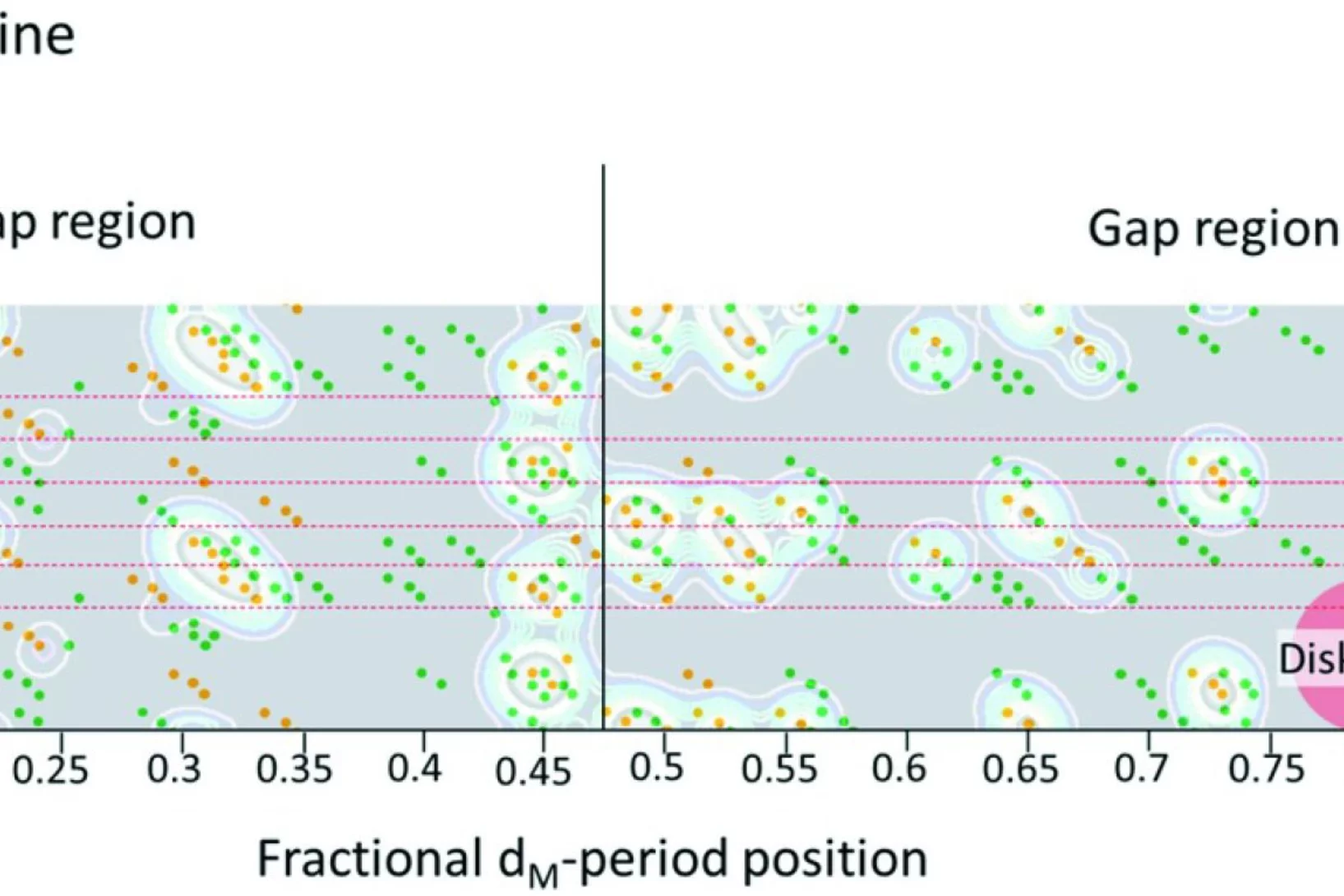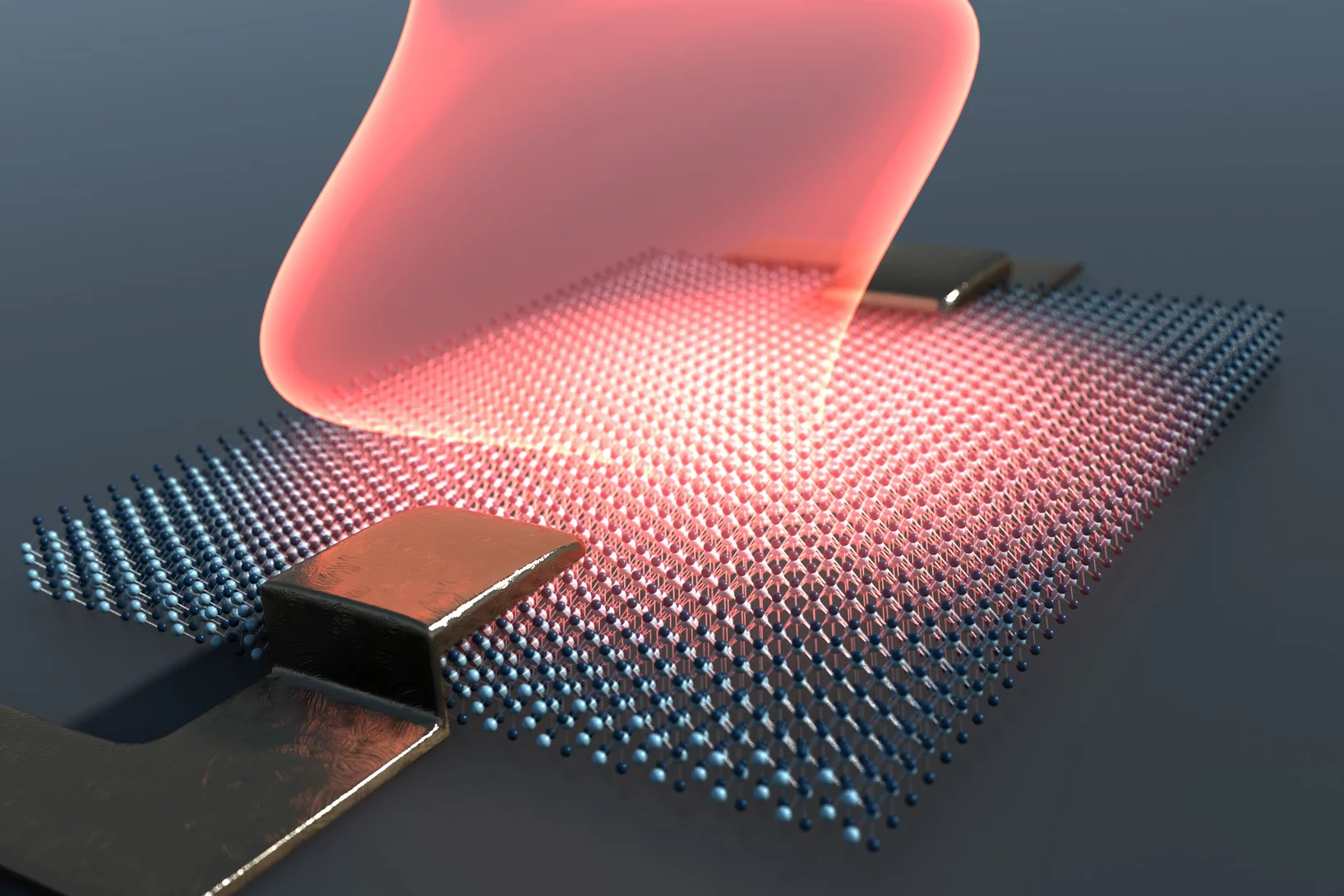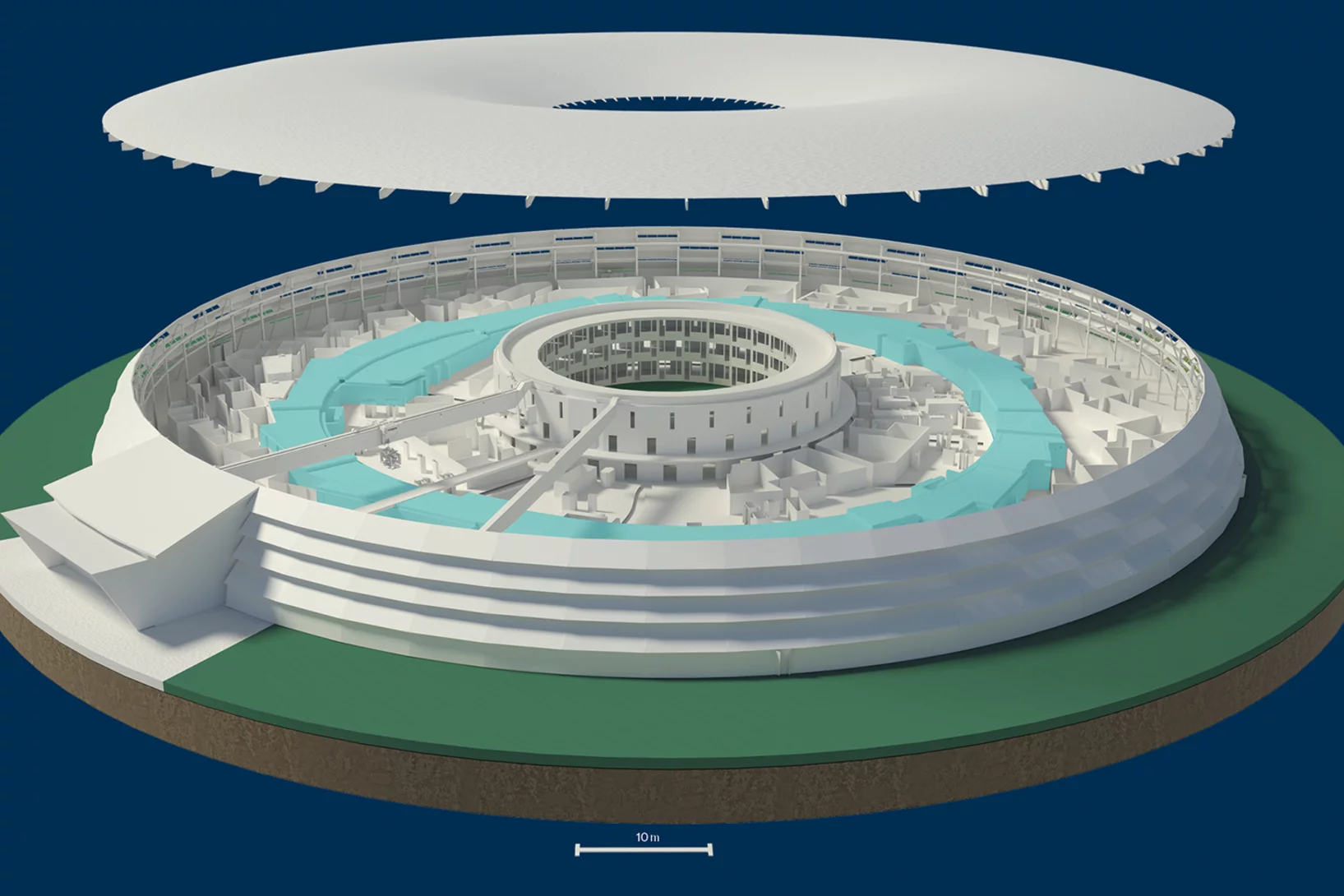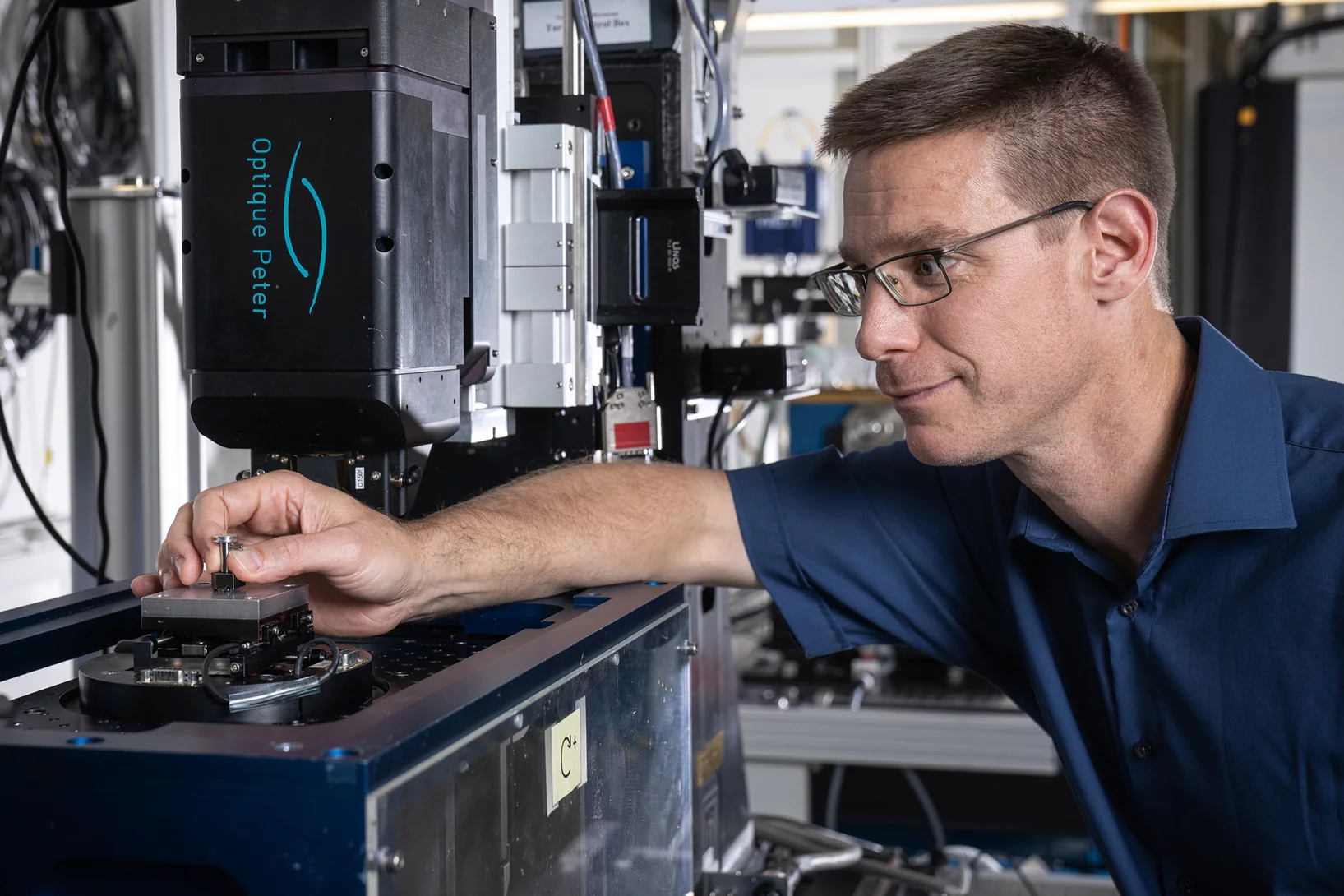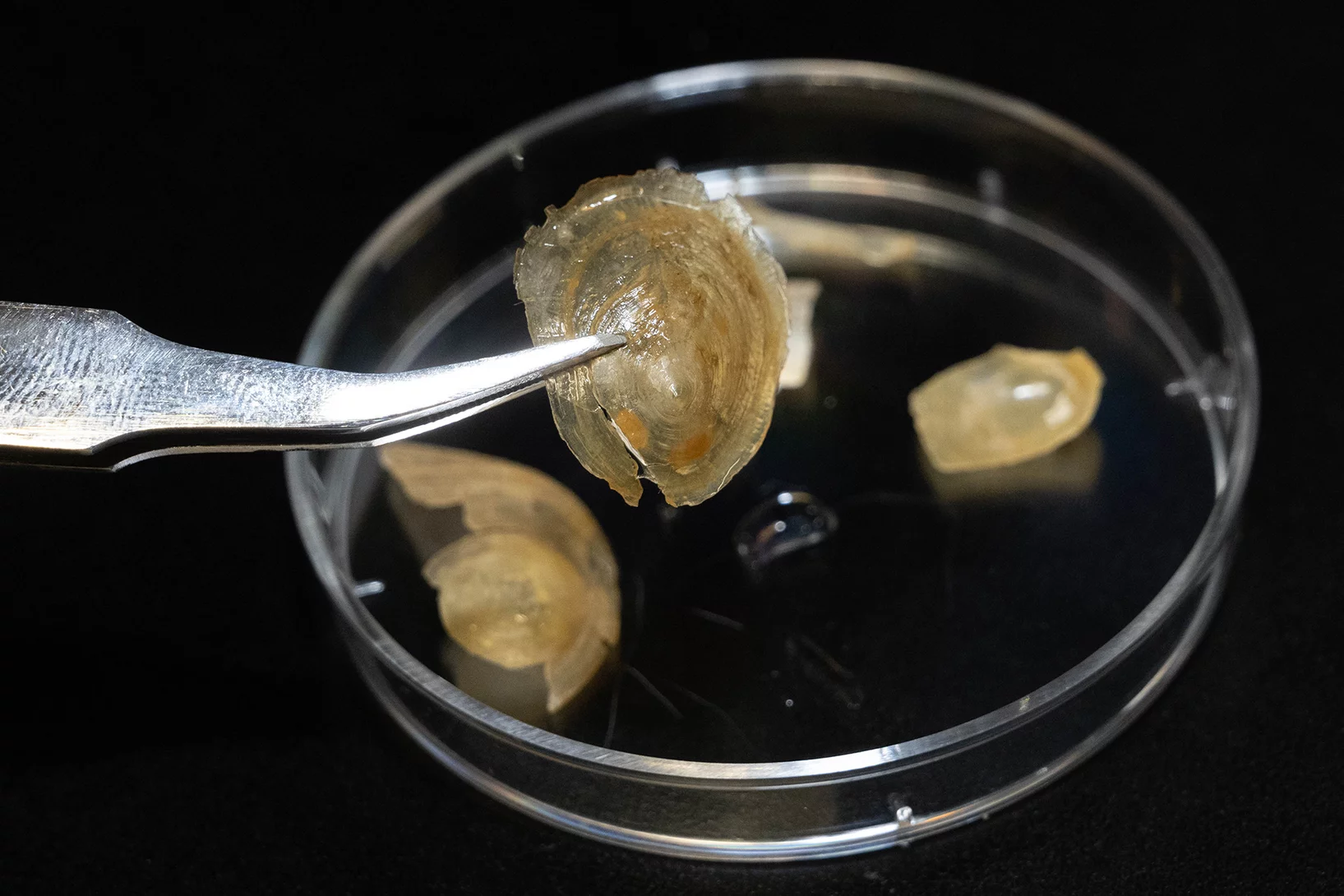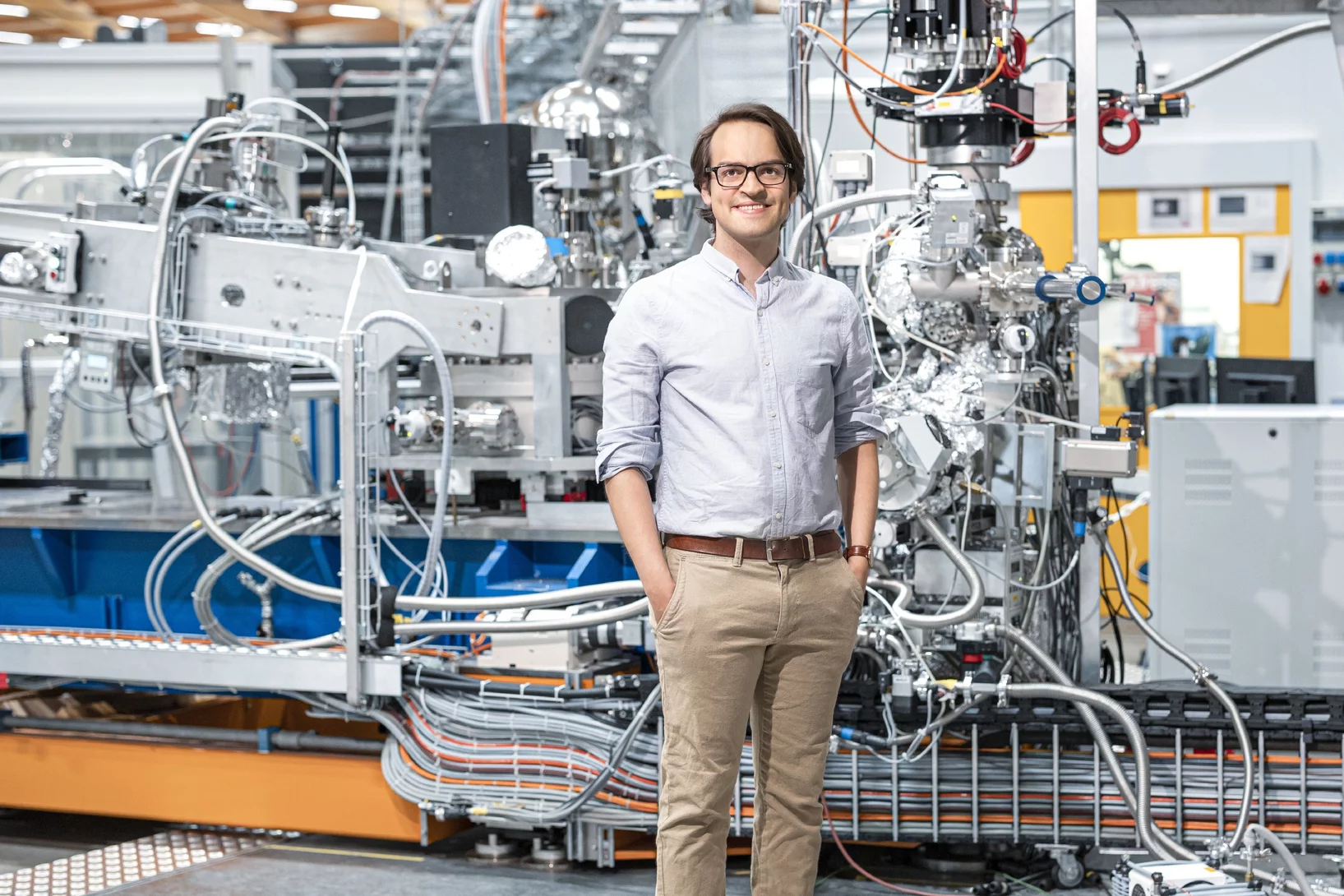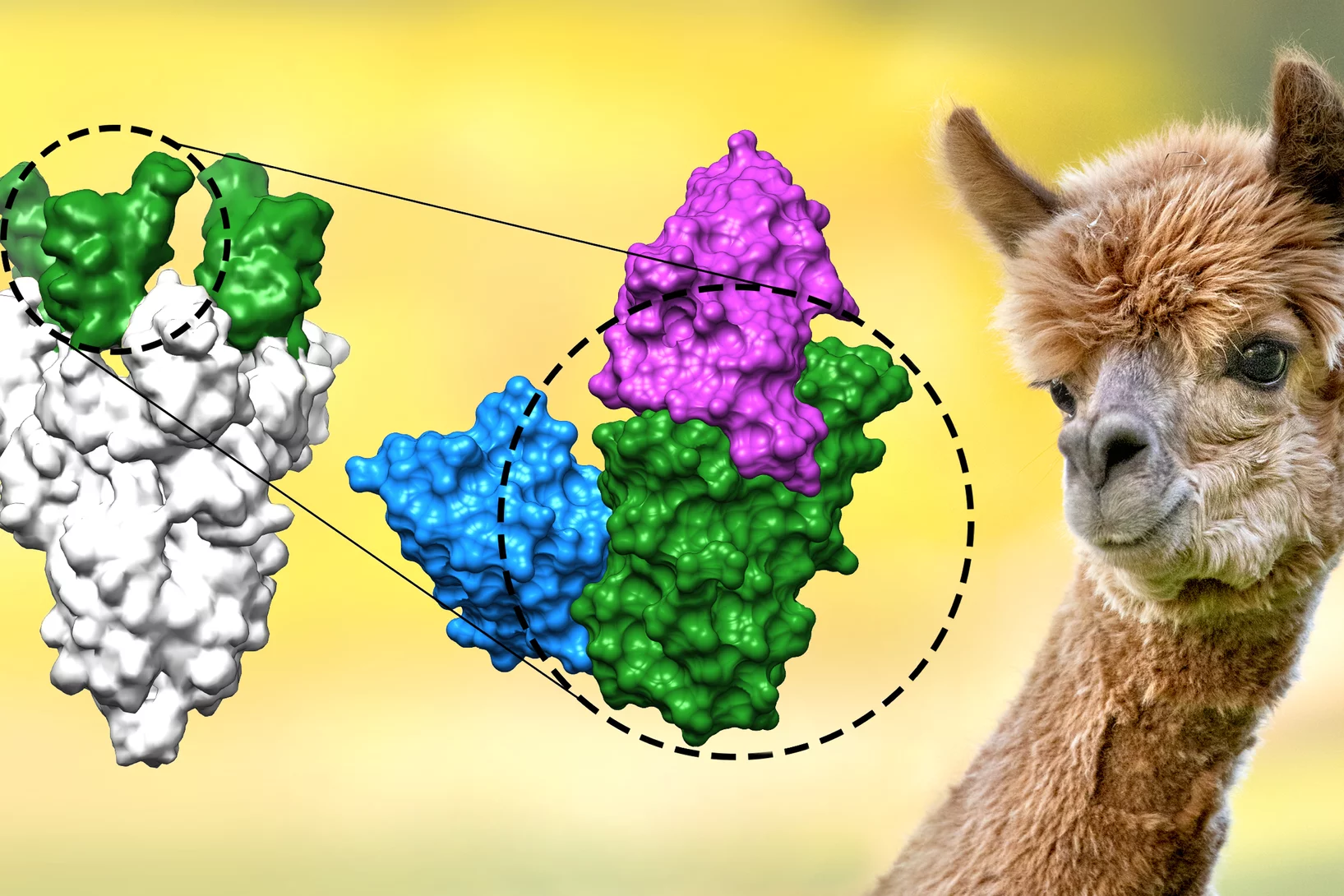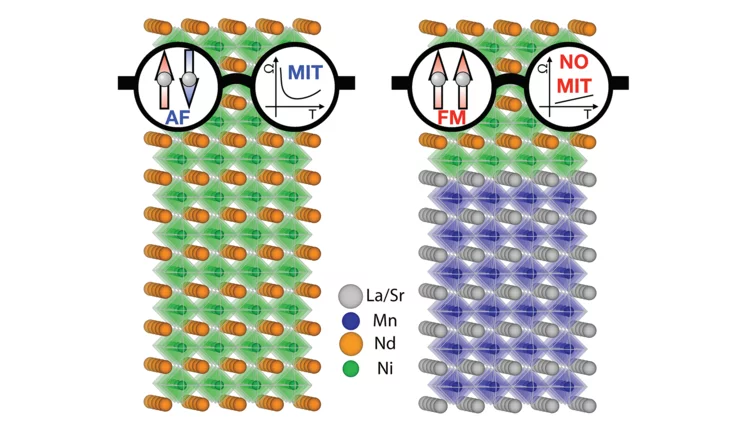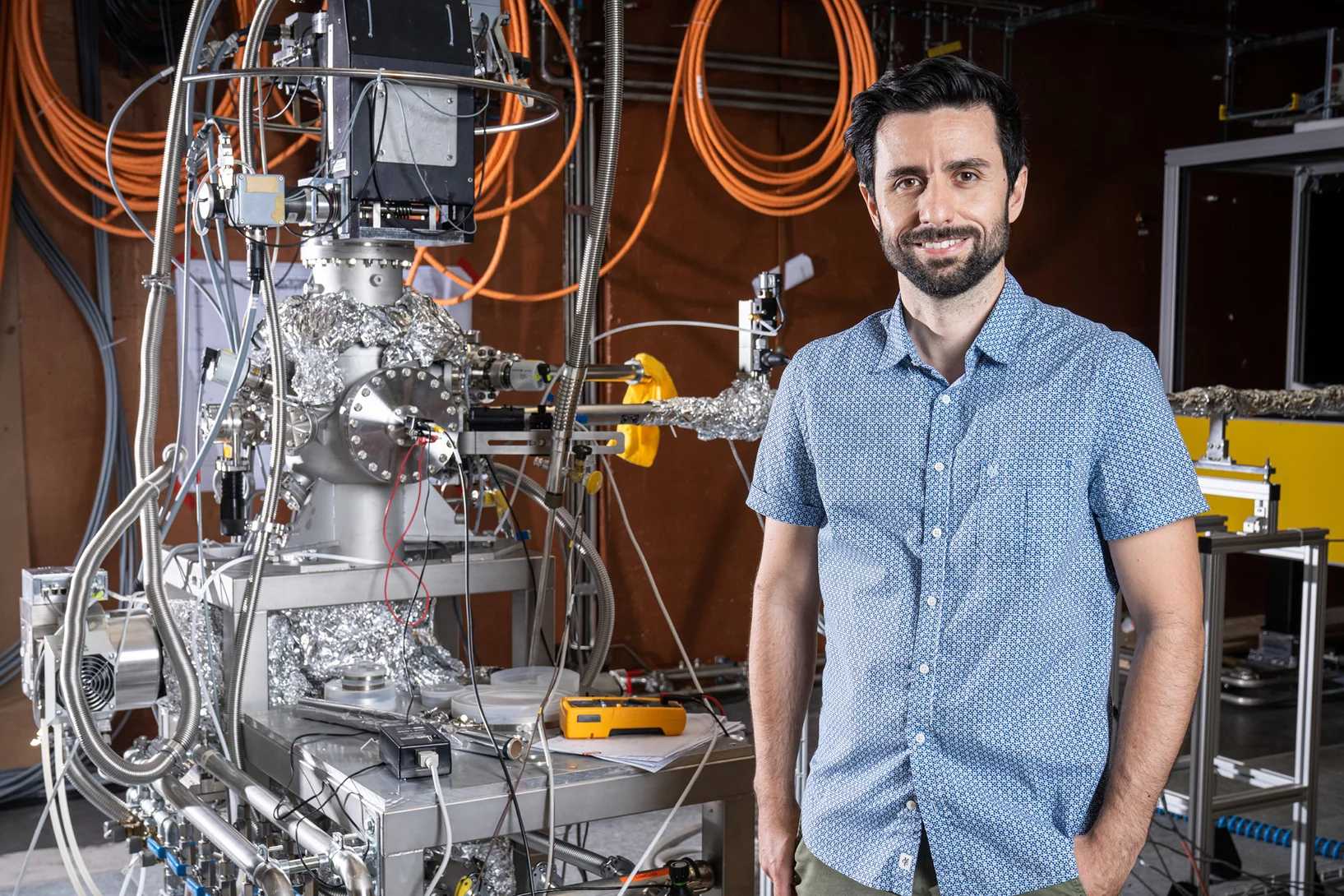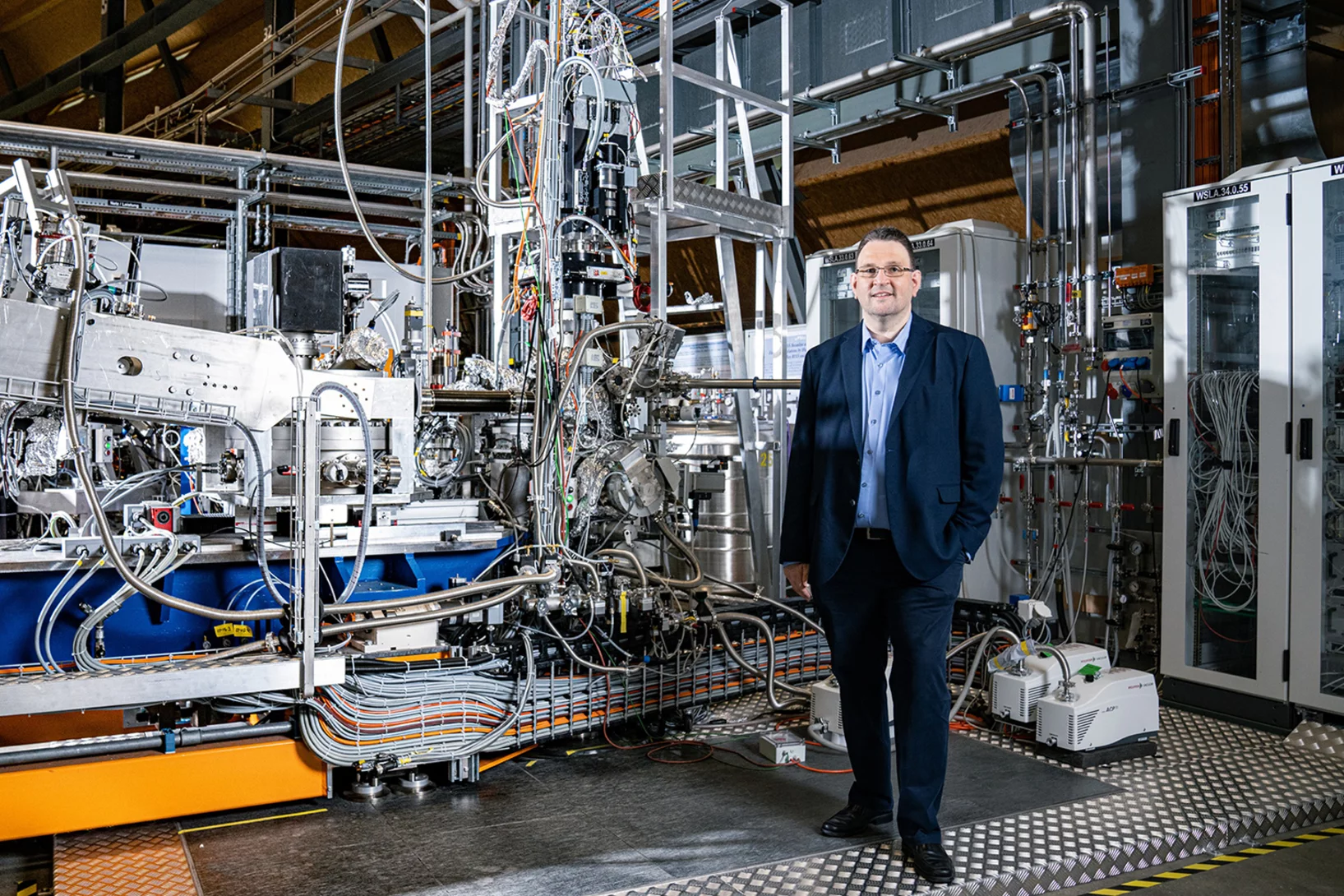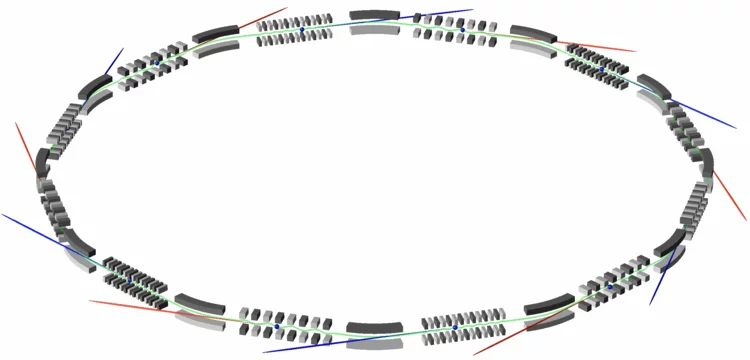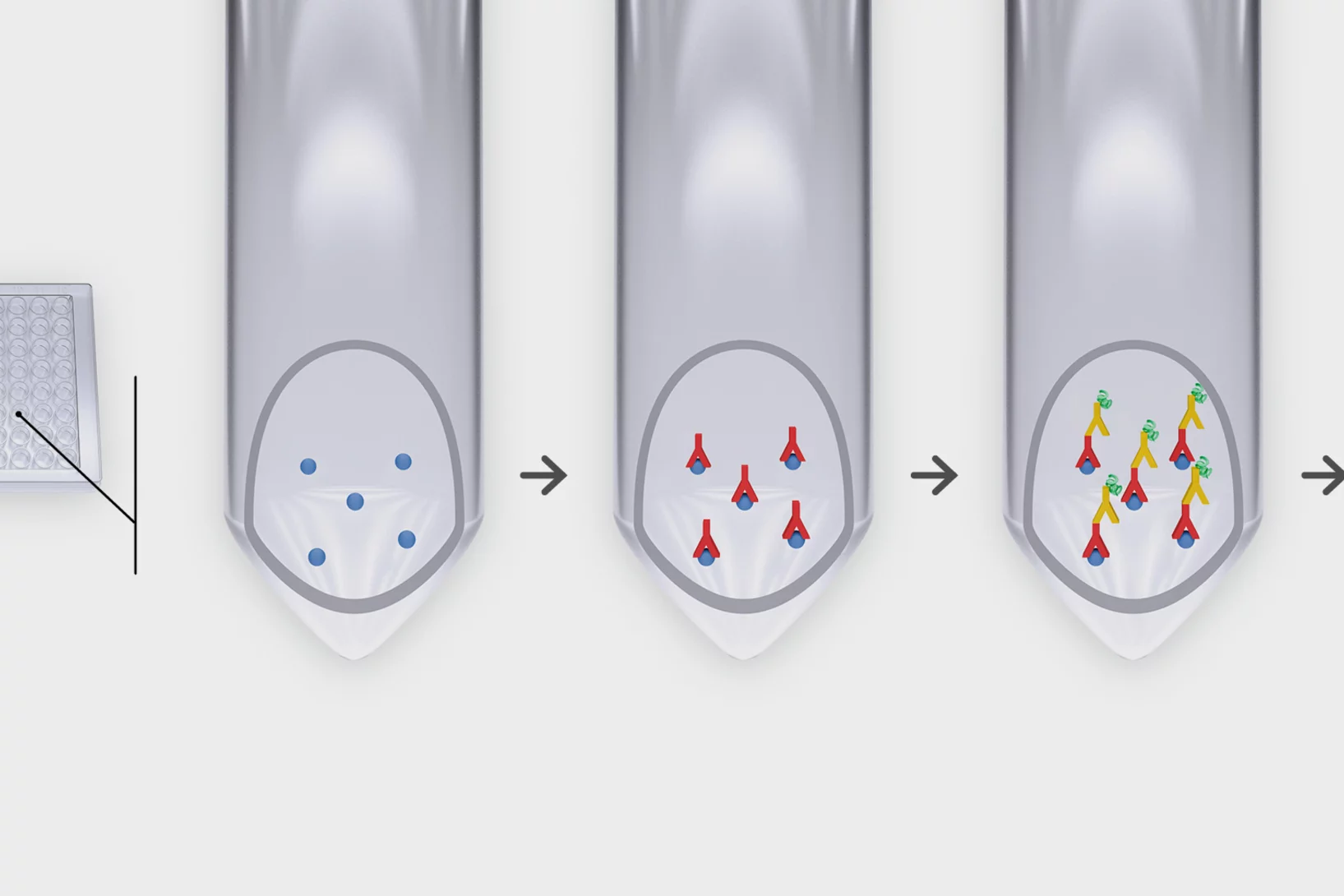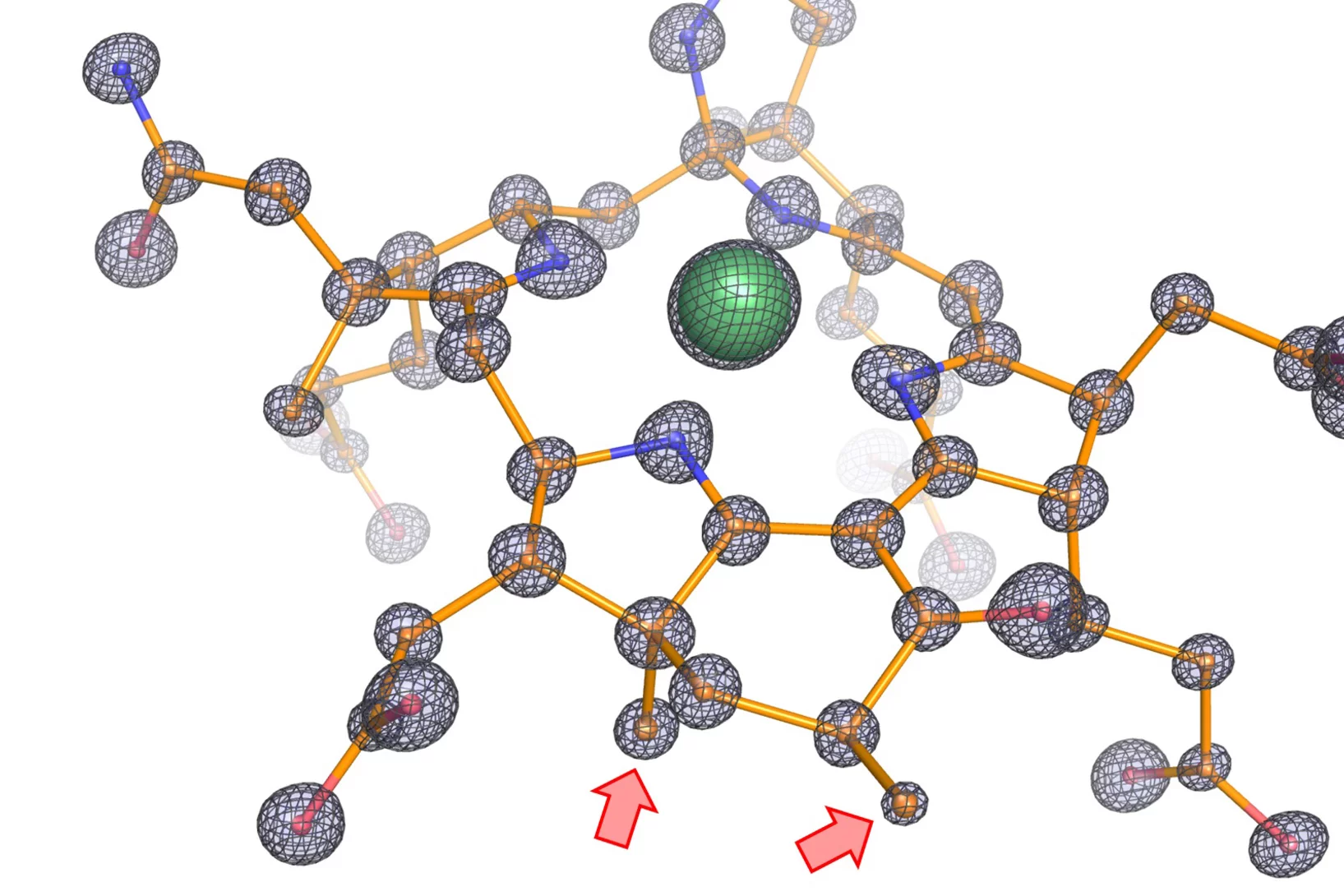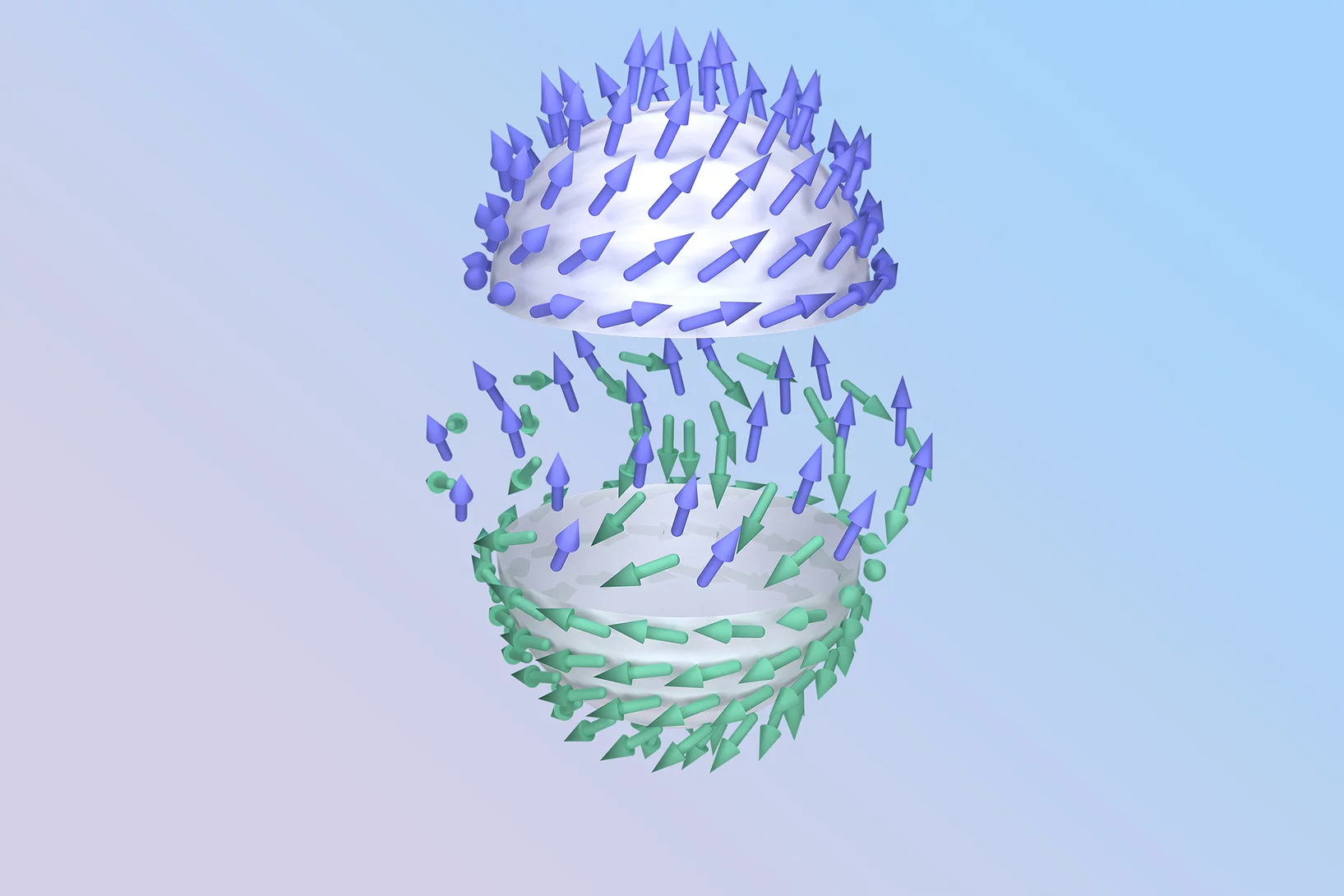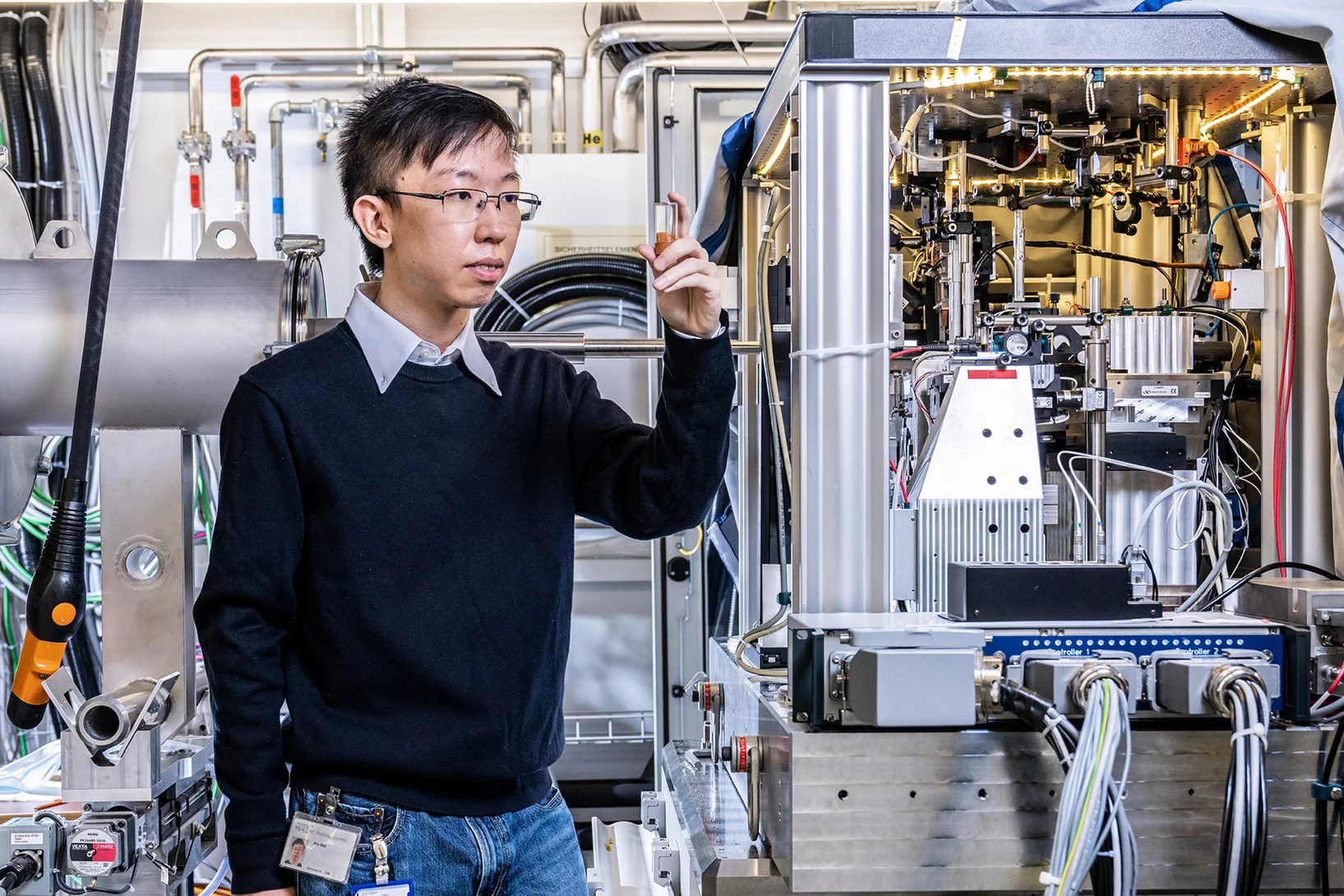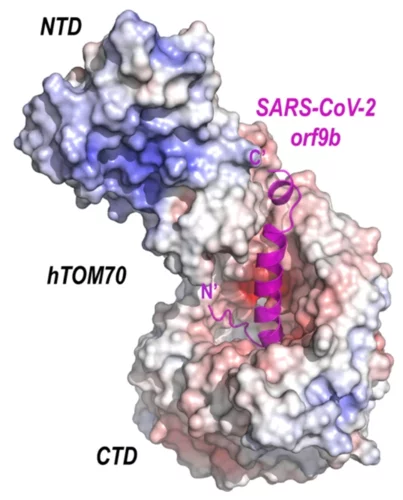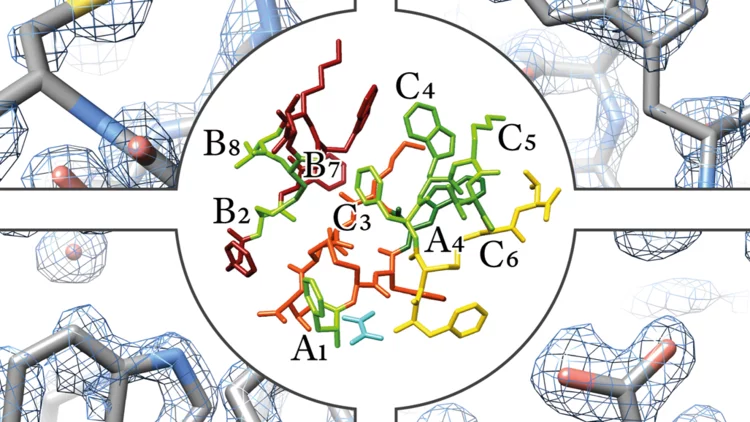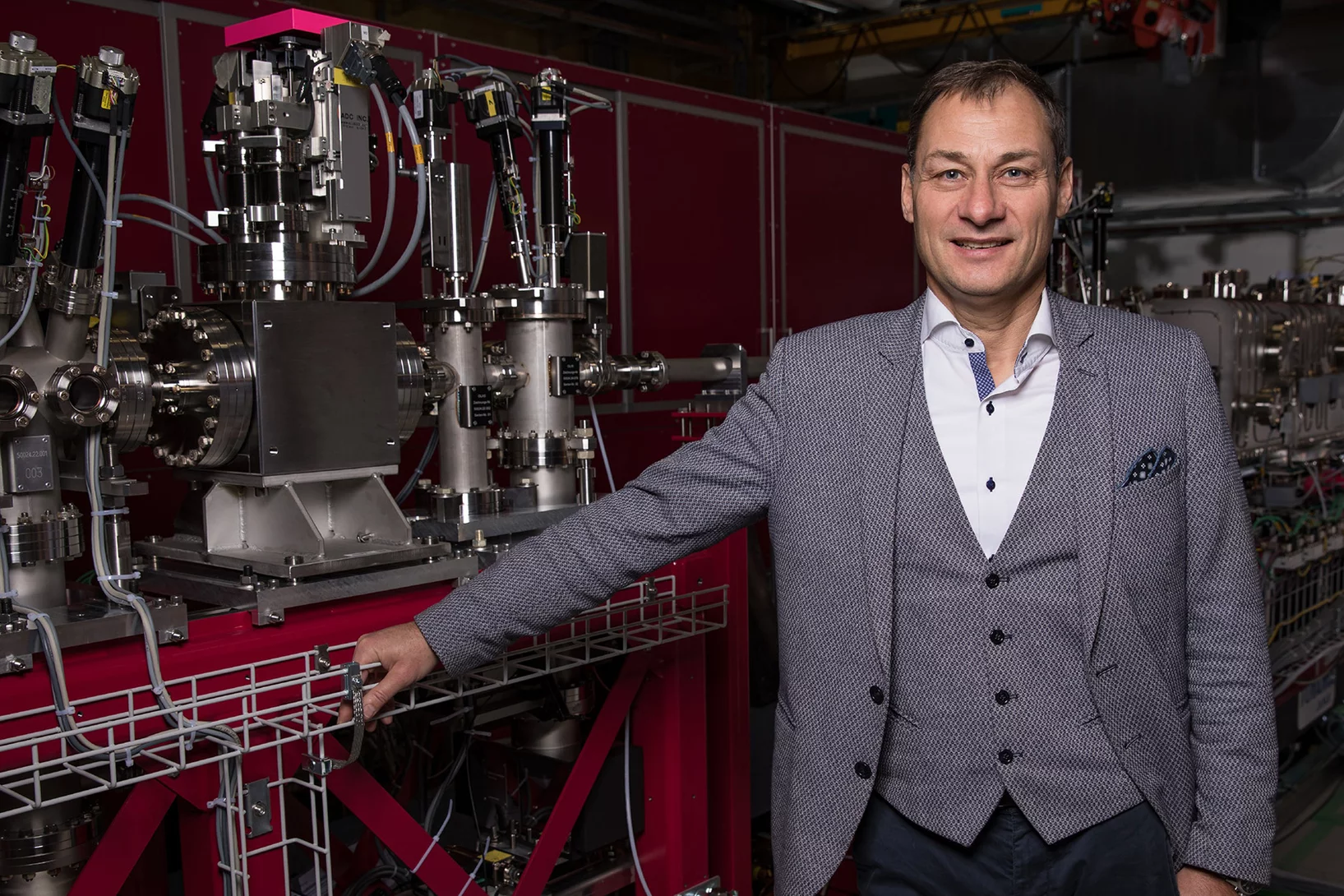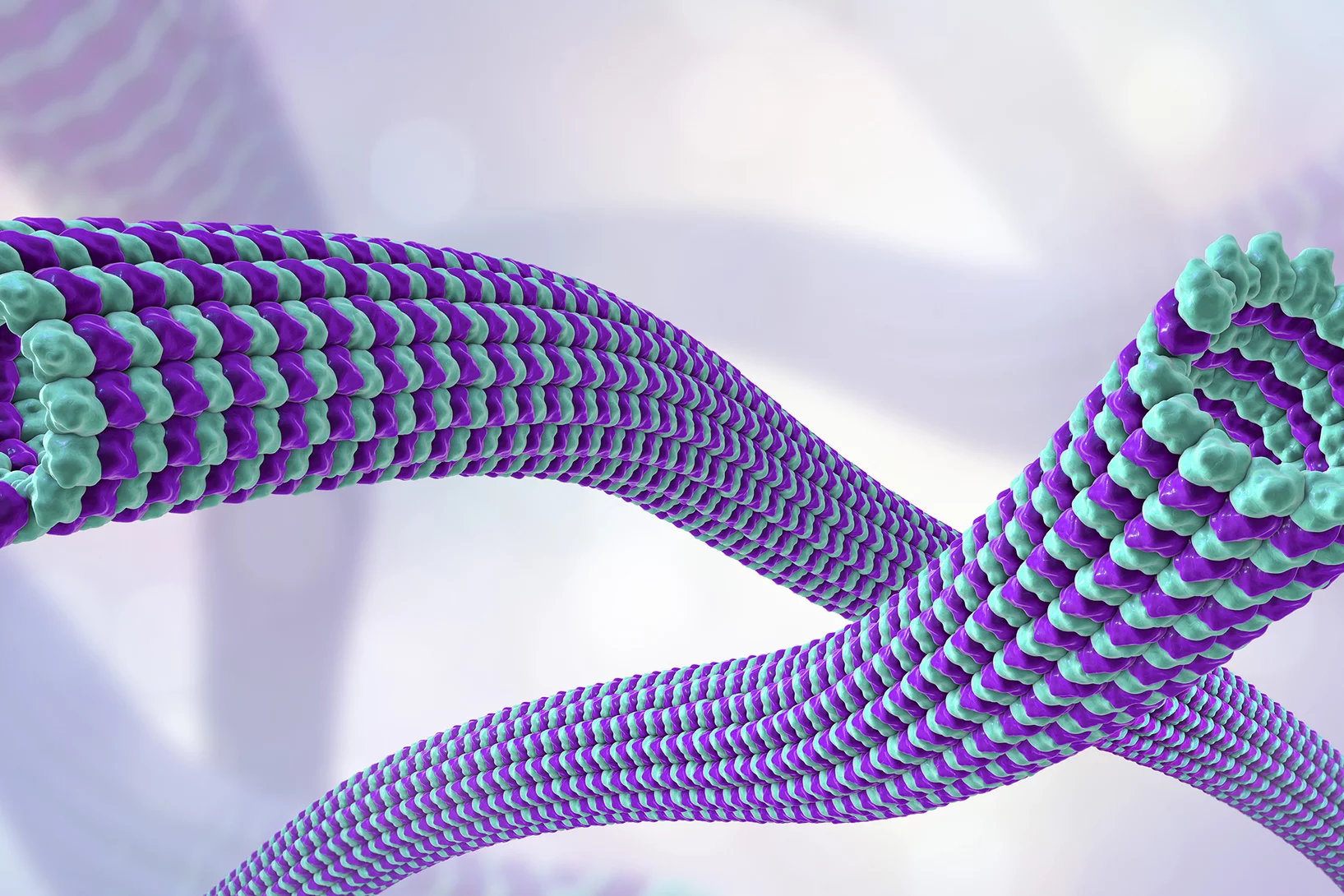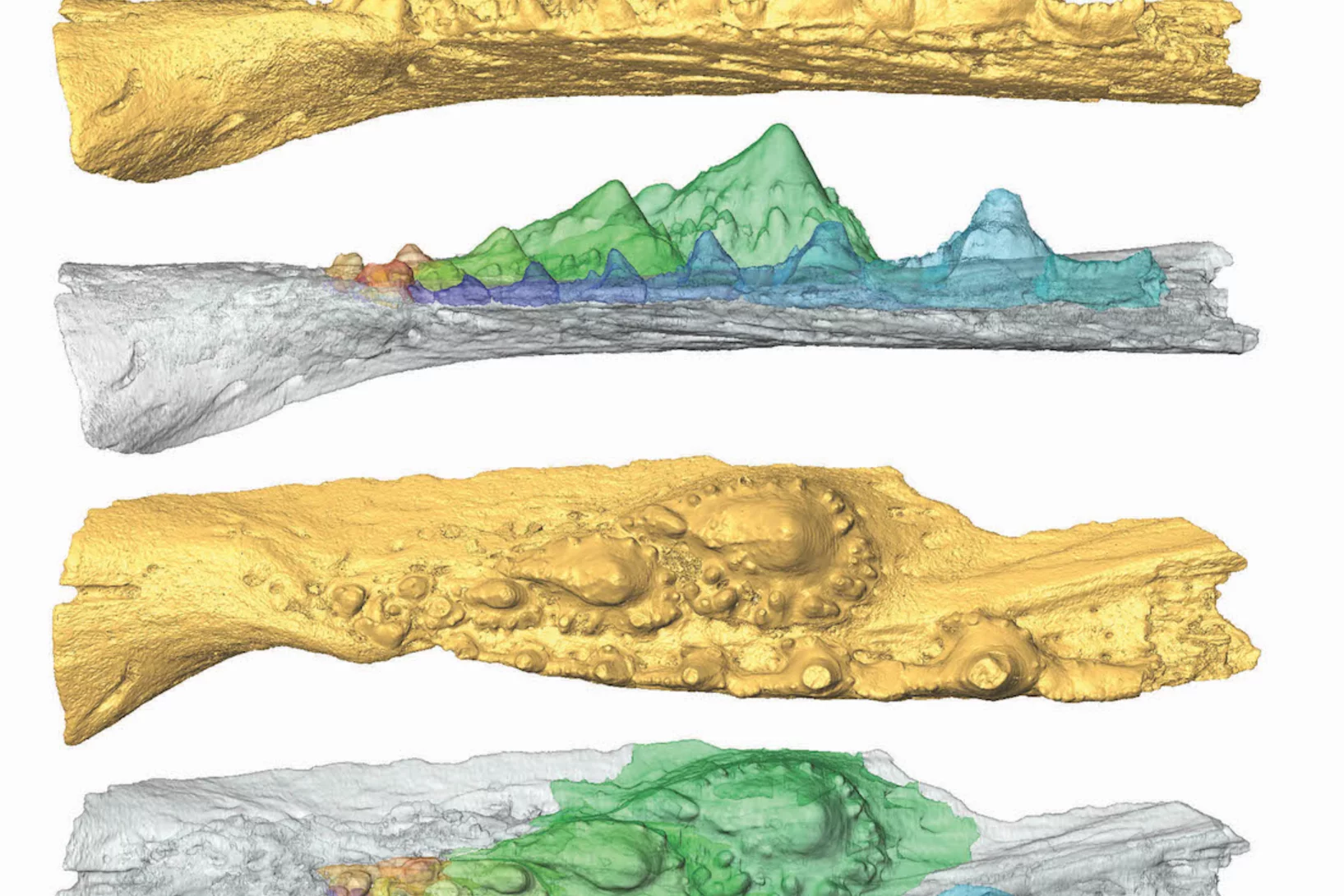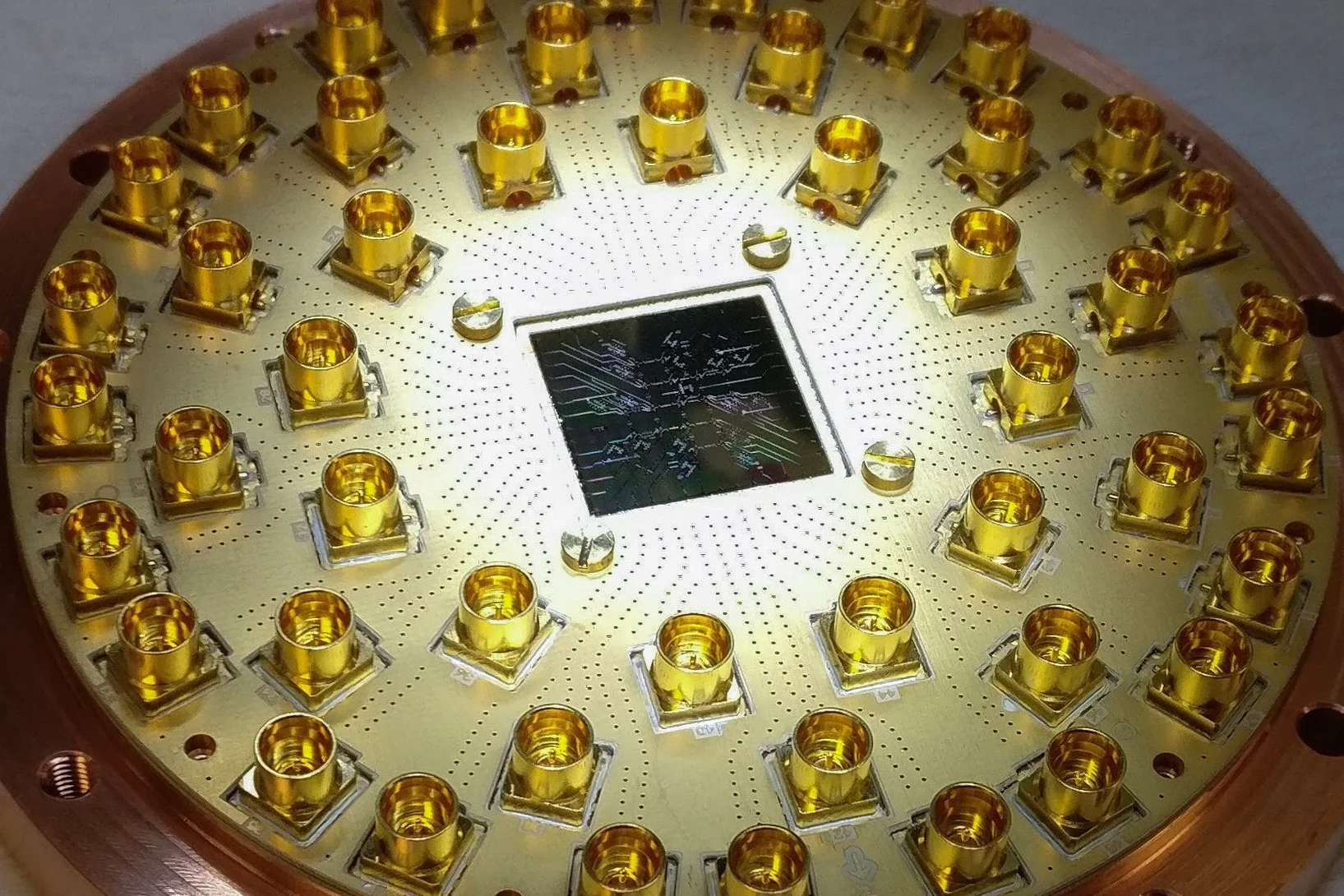Show filters
Glycation of collagen: Quantifying rates
Collagen is abundant in the connective tissue of human beings, e.g. in tendons, ligament and cornea. Glycation of collagen distorts its structure, renders the extracellular matrix stiff and brittle and at the same time lowers the degradation susceptibility thereby preventing renewal. Based on models and with parameters determined from experimental data, we describe the glycation of type 1 collagen in bovine pericardium derived bio-tissues upon incubation in glucose and ribose. We hope that this contributes to a better quantitative understanding of the effects of diabetes on collagen.
Ultrafast control of quantum materials
Using light to fundamentally change the properties of solids
New active agent against parasites
PSI researchers identify potential active agent against several unicellular parasites – including the pathogens that cause malaria and toxoplasmosis.
3D view: Swiss Light Source SLS
Linear accelerator, booster ring, storage ring: our 3D graphic of the Swiss Light Source shows the inside of the facility and how it serves research.
Dr. Manuel Guizar-Sicairos is awarded ICO prize
Dr. Manuel Guizar-Sicairos, beamline scientist at the cSAXS beamline, is the 2019 recipient of the International Commission for Optics (ICO) Prize. The distinction was awarded in the EOSAM conference in Rome.
X-ray microscopy with 1000 tomograms per second
A team at the Swiss Light Source SLS have set a new record using an imaging method called tomoscopy.
The mystery of the flexible shell
Why the shell of a marine animal is soft in water but hard in air.
Exploring the practical benefits of exotic materials
Niels Schröter receives an award from the Swiss Physical Society (SPG).
Nanobodies against SARS-CoV-2
In a study published in EMBO Journal, researchers at the Max Planck Institute for Biophysical Chemistry, Göttingen, Germany, developed nanobodies that efficiently block the coronavirus SARS-CoV-2 and its variants. The high resolution structural characterization was performed at the X10SA crystallography beamline at the Swiss Light Source.
Creating novel quantum phases via the heterostructure engineering
Within this synergetic collaboration, PSI scientists have investigated the correlation between magnetic and electronic ordering in NdNiO3 by tuning its properties through proximity to a ferromagnetic manganite layer. The main outcome is that the stray magnetic field from the manganite layer causes a novel ferromagnetic-metallic (FM-M) phase in NNO. This work demonstrates the utilization of heterostructure engineering for creating novel quantum phases.
First light at Furka: The experiments can begin
The path to experiments that are unique in the world is now open.
Secret of Stradivarius violins revealed
As an international team of researchers discovered, the old Italian masters Stradivari and Guarneri relied on unexpected chemical additives in making violins.
Understanding the physics in new metals
Together with international colleagues, PSI researchers have now been able to make correlated metals more readily usable for applications in superconductivity, data processing, and quantum computers.
Synchrotron movies
Prof Philip Willmott, the author of the book 'Introduction to Synchrotron Radiation: techniques and applications' (second edition, John Wiley & Sons, Chichester, 2019. ISBN: 9781119280392), makes the scripts for the simulations and animations available to the public.
Tracking down unreported Coronavirus cases
The University Hospital of Zurich uses proteins made at PSI for Europe’s first large-scale serology study on coronavirus prevalence in Switzerland.
How ethane-consuming archaea pick up their favorite dish
Scientists decode the structure of the enzyme responsible for the ethane fixation by – beside others – using the SLS.
PSI: advancing in the fight against Covid-19
Crystal structure analysis, computer models, cell cultures – to pursue research on Sars-CoV-2, PSI is exploring many avenues. An overview.
Magnetic nanoworld
At PSI, researchers come across exotic phenomena such as frustrated magnets and nano-vortices, which may one day enable better data storage.
How catalysts age
Catalysts used in industry change their material structure over the years. Using a new method, PSI researchers have now studied this on the nanoscale.
Crystal structure of SARS-CoV-2 Orf9b in complex with human TOM70 suggests unusual virus-host interactions
In a study published in Nature Communications, researchers at the NHC Key Laboratory of Systems Biology of Pathogens in Beijing, China, in collaboration with the Paul Scherrer Institut characterize the interactions of SARS-CoV-2 orf9b and human TOM70 biochemically, and they determine the 2.2 Å crystal structure of the TOM70 cytosolic domain with a bound SARS-CoV-2 orf9b peptide.
Application of synchrotron-XRPD to protein powders
Breakthrough applications of high-resolution and high-counting statistics synchrotron X-Ray Powder Diffraction to protein powders leading to the determination of a 1.8 structural model of the pharmaceutical peptide "octreotide" - the highest resolution ever achieved for a peptide of this complexity using X-ray powder diffraction and crystallographic methods.
A "magical" power with major impact
Microrobots, materials with shape memory, and better particle accelerators are made possible through the exploration of magnetism at PSI.
Quantifying oriented myelin in mouse and human brain
Myelin 'insulates' our neurons enabling fast signal transduction in our brain. Myelin levels, integrity, and neuron orientations are important determinants of brain development and disease. Small-angle X-ray scattering tensor tomography (SAXS-TT) is a promising technique for non-destructive, stain-free imaging of brain samples, enabling quantitative studies of myelination and neuron orientations, i.e. of nano-scale properties imaged over centimeter-sized samples.
No rose-coloured glasses here
Light is essential for life, and for researchers it is also a wonderful tool to better understand the structure of materials.
How remdesivir works against the coronavirus
Researchers at Goethe University Frankfurt, in cooperation with the PSI have probably discovered another, previously unknown mechanism of action of the antiviral remdesivir.
Cell cytoskeleton as target for new active agents
Using a combination of computer simulations and laboratory experiments, PSI researchers have identified new binding sites for active agents on the vital protein tubulin.
Deep evolutionary origins of the human smile
Detailed characterization of the tooth and jaw structure and development among shark ancestors by synchrotron based X-ray tomographic microscopy at TOMCAT led an international team of researchers from the Naturalis Biodiversity Center in Leiden and the University of Bristol to the discovery that while teeth evolved once, complex dentitions have been gained and lost many times in evolutionary history.
"The goal is an experimental quantum computer in the canton of Aargau"
ETH Zurich and PSI are jointly opening a Quantum Computing Hub. An interview with Gabriel Aeppli and Christian Rüegg about the new research centre.
ETH Zurich and PSI found Quantum Computing Hub
ETH Zurich and the Paul Scherrer Institute PSI are opening a joint centre for the development of quantum computers. The aim is to advance the realisation of quantum computers based on both ion traps and superconducting devices.
Uniquely sharp X-ray view
A new PSI method allows quantum-physical research on materials with the aid of X-ray lasers.


